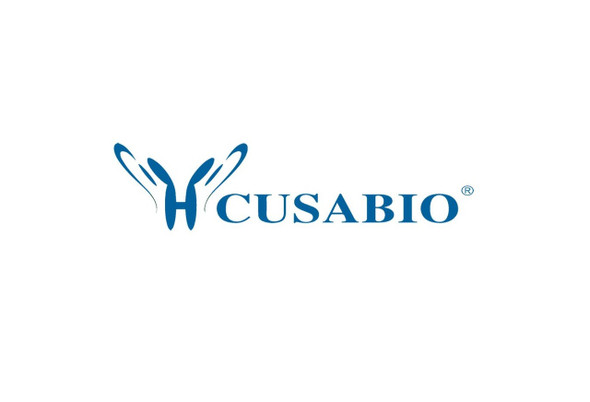Cusabio Rattus norvegicus Recombinants
Recombinant Rat Transforming growth factor beta-1 proprotein (Tgfb1), partial | CSB-EP023446RA
- SKU:
- CSB-EP023446RA
- Availability:
- 3 - 7 Working Days
Description
Recombinant Rat Transforming growth factor beta-1 proprotein (Tgfb1), partial | CSB-EP023446RA | Cusabio
Alternative Name(s): Cleaved into the following chain: Latency-associated peptide Short name: LAP
Gene Names: Tgfb1
Research Areas: Signal Transduction
Organism: Rattus norvegicus (Rat)
AA Sequence: LSTCKTIDMELVKRKRIEAIRGQILSKLRLASPPSQGEVPPGPLPEAVLALYNSTRDRVAGESADPEPEPEADYYAKEVTRVLMVDRNNAIYDKTKDITHSIYMFFNTSDIREAVPEPPLLSRAELRLQRFKSTVEQHVELYQKYSNNSWRYLGNRLLTPTDTPEWLSFDVTGVVRQWLNQGDGIQGFRFSAHCSCDSKDNVLHVEINGISPKRRGDLGTIHDMNRPFLLLMATPLERAQHLHSSRHRR
Source: E.coli
Tag Info: N-terminal 6xHis-SUMO-tagged
Expression Region: 30-278aa
Sequence Info: Partial
MW: 44.5 kDa
Purity: Greater than 90% as determined by SDS-PAGE.
Relevance: Multifunctional protein that controls proliferation, differentiation and other functions in many cell types. Many cells synthesize TGFB1 and have specific receptors for it. It positively and negatively regulates many other growth factors. It plays an important role in bone remodeling as it is a potent stimulator of osteoblastic bone formation, causing chemotaxis, proliferation and differentiation in committed osteoblasts. Can promote either T-helper 17 cells (Th17) or regulatory T-cells (Treg) lineage differentiation in a concentration-dependent manner. At high concentrations, leads to FOXP3-mediated suppression of RORC and down-regulation of IL-17 expression, favoring Treg cell development. At low concentrations in concert with IL-6 and IL-21, leads to expression of the IL-17 and IL-23 receptors, favoring differentiation to Th17 cells
Reference: "cDNA cloning by PCR of rat transforming growth factor beta-1."Qian S.W., Kondaiah P., Roberts A.B., Sporn M.B.Nucleic Acids Res. 18:3059-3059(1990)
Storage: The shelf life is related to many factors, storage state, buffer ingredients, storage temperature and the stability of the protein itself. Generally, the shelf life of liquid form is 6 months at -20?/-80?. The shelf life of lyophilized form is 12 months at -20?/-80?.
Notes: Repeated freezing and thawing is not recommended. Store working aliquots at 4? for up to one week.
Function: Multifunctional protein that controls proliferation, differentiation and other functions in many cell types. Many cells synthesize TGFB1 and have specific receptors for it. It positively and negatively regulates many other growth factors. It plays an important role in bone remodeling as it is a potent stimulator of osteoblastic bone formation, causing chemotaxis, proliferation and differentiation in committed osteoblasts (By similarity). Stimulates sustained production of collagen through the activation of CREB3L1 by regulated intramembrane proteolysis (RIP) (By similarity). Can promote either T-helper 17 cells (Th17) or regulatory T-cells (Treg) lineage differentiation in a concentration-dependent manner. At high concentrations, leads to FOXP3-mediated suppression of RORC and down-regulation of IL-17 expression, favoring Treg cell development. At low concentrations in concert with IL-6 and IL-21, leads to expression of the IL-17 and IL-23 receptors, favoring differentiation to Th17 cells. Mediates SMAD2/3 activation by inducing its phosphorylation and subsequent translocation to the nucleus. Can induce epithelial-to-mesenchymal transition (EMT) and cell migration in various cell types (By similarity).
Involvement in disease:
Subcellular Location: Secreted, extracellular space, extracellular matrix
Protein Families: TGF-beta family
Tissue Specificity: Abundant in the bone matrix.
Paythway:
Form: Liquid or Lyophilized powder
Buffer: If the delivery form is liquid, the default storage buffer is Tris/PBS-based buffer, 5%-50% glycerol. If the delivery form is lyophilized powder, the buffer before lyophilization is Tris/PBS-based buffer, 6% Trehalose, pH 8.0.
Reconstitution: We recommend that this vial be briefly centrifuged prior to opening to bring the contents to the bottom. Please reconstitute protein in deionized sterile water to a concentration of 0.1-1.0 mg/mL.We recommend to add 5-50% of glycerol (final concentration) and aliquot for long-term storage at -20?/-80?. Our default final concentration of glycerol is 50%. Customers could use it as reference.
Uniprot ID: P17246
HGNC Database Link: N/A
UniGene Database Link: UniGene
KEGG Database Link: KEGG
STRING Database Link: STRING
OMIM Database Link: N/A









